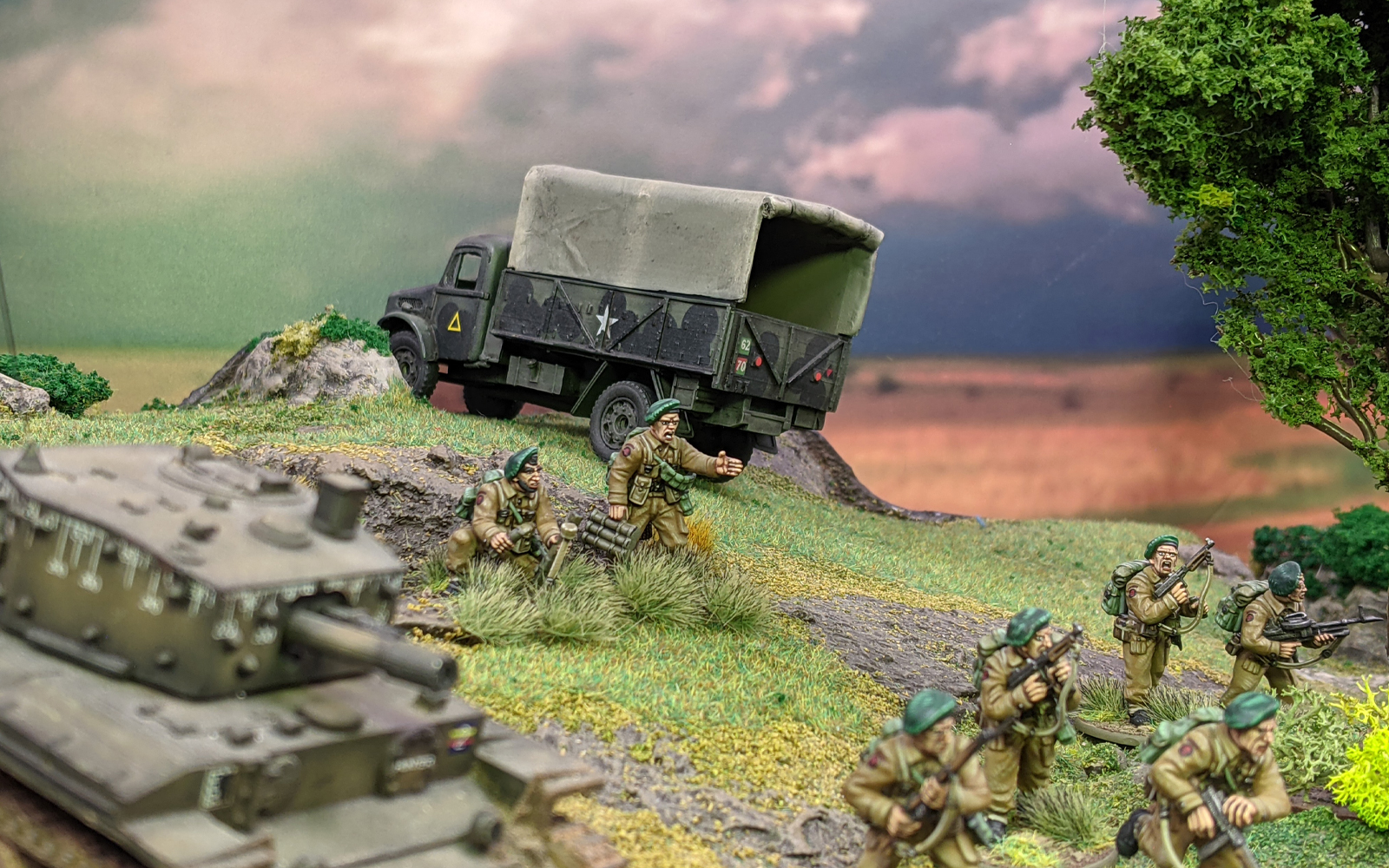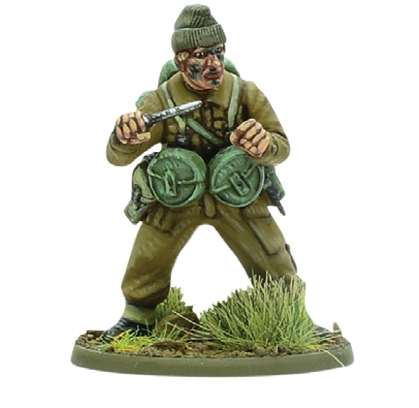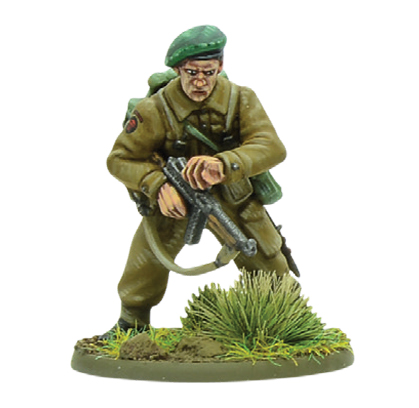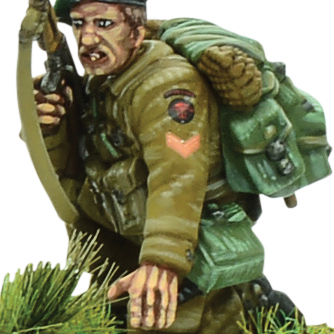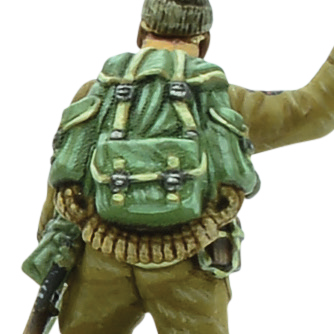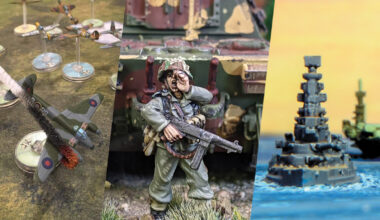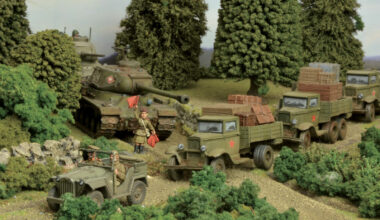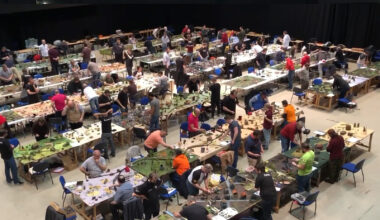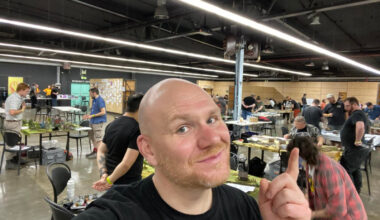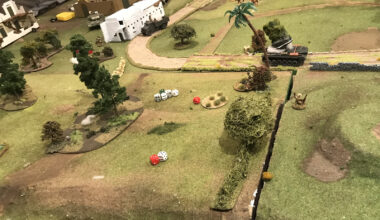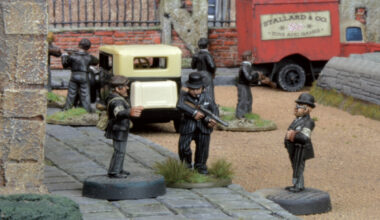The Commandos established an extraordinary reputation for dash and bravery in World War II. Formed in 1940 by order of British Prime Minister Winston Churchill with the express goal of taking the fight back to the apparently unstoppable German armed forces that had thrown the British Expeditionary Force out of France with such apparent ease. An all-volunteer force, they recruited from all parts of the armed services. Indeed there were Army commandos, Naval commandos and the Inter-Allied Commando regiment which included nationalities such as the Belgians, Polish, Dutch and others.
Commandos fought in campaigns in Europe, Burma, Africa and earned battle honours for many famous actions including arguably the greatest raid of all – St Nazaire.
Commandos were fielded in many different ways – from units of less than a full section up to full assault divisions depending on the task at hand. Superbly trained, aggressive in action, well-equipped and deadly in hand-to-hand combat the Commandos were rightly feared by their German, Italian and Japanese foes.
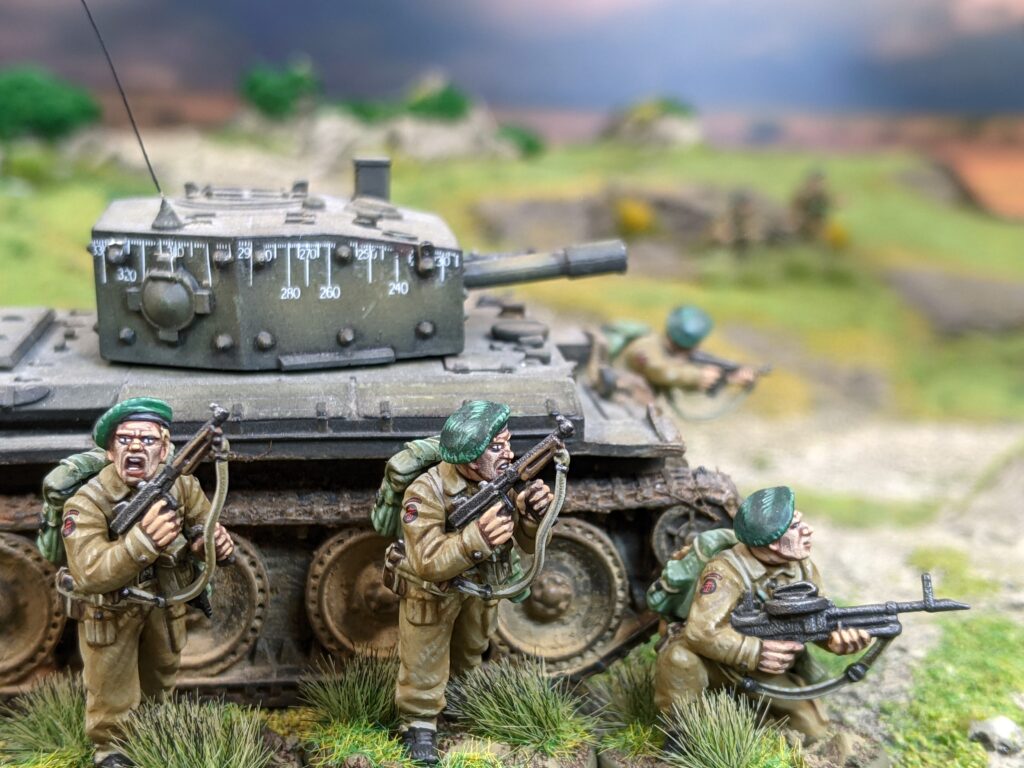
The New Sprue
The new sprue is packed with options. Choose from heads wearing cap comforters or green berets, a whole swathe of accessories, and plenty of weapon and equipment options including Vickers K LMGs; Thompson SMGs, Browning Hi-power pistols; Rifles; PIAT and Light Mortars as well as arms lobbing grenades or brandishing fighting knives or machetes.
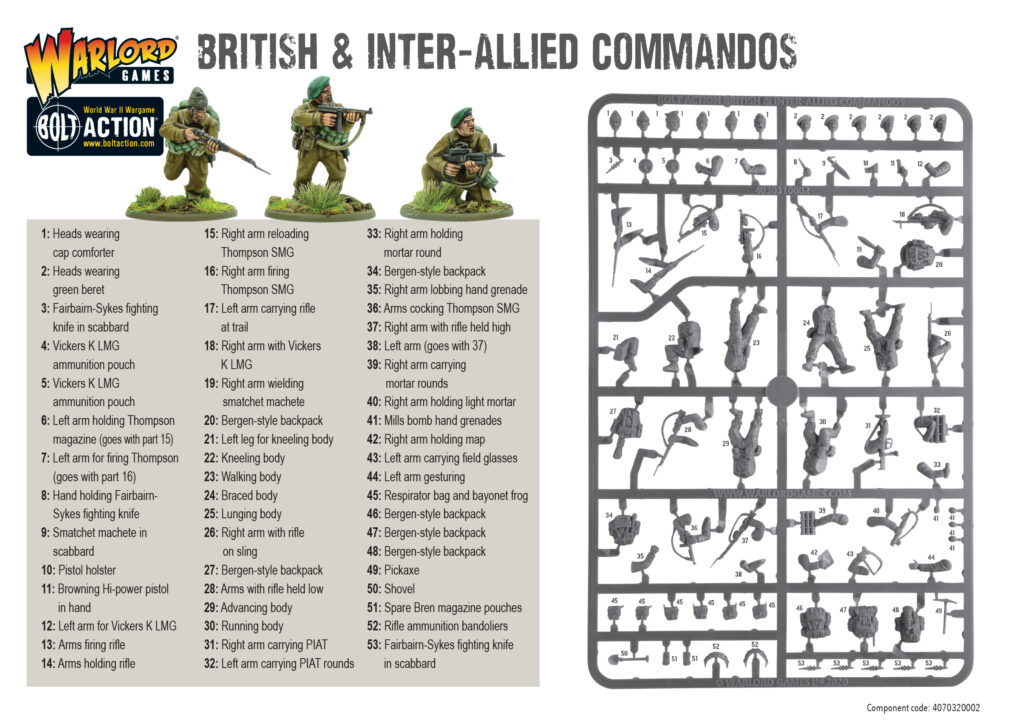
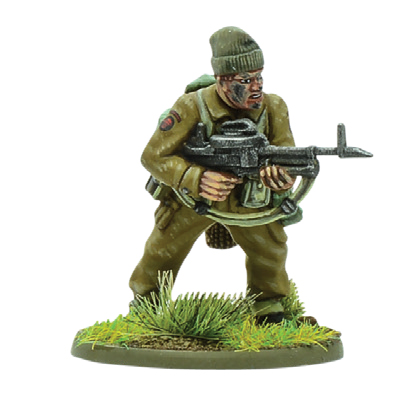

Commando insignia (from top to bottom): Unit shoulder flash, Commando emblem, NCO stripes
Commandos were known to carry bergen-style backpacks. These were well sought after by other troops due to their carrying capacity and rugged design.

British commandos are not the only Bolt Action army to receive new models – United States and German players also gain some new tools for their tabletop arsenals.
M8 Scott HMC – Now in Plastic
Based on the ubiquitous M5 Stuart light tank hull, the M8 75mm Howitzer Motor Carriage (HMC) provided much-needed mobile artillery support to US assault forces. Replacing the M5 Stuart turret with a more spacious open-topped turret to house a short-barrelled M2 (and later the M3) 75mm howitzer and a mix of smoke and high explosive ammunition. A pintle-mounted .50 Cal heavy machine gun provided additional defensive firepower.
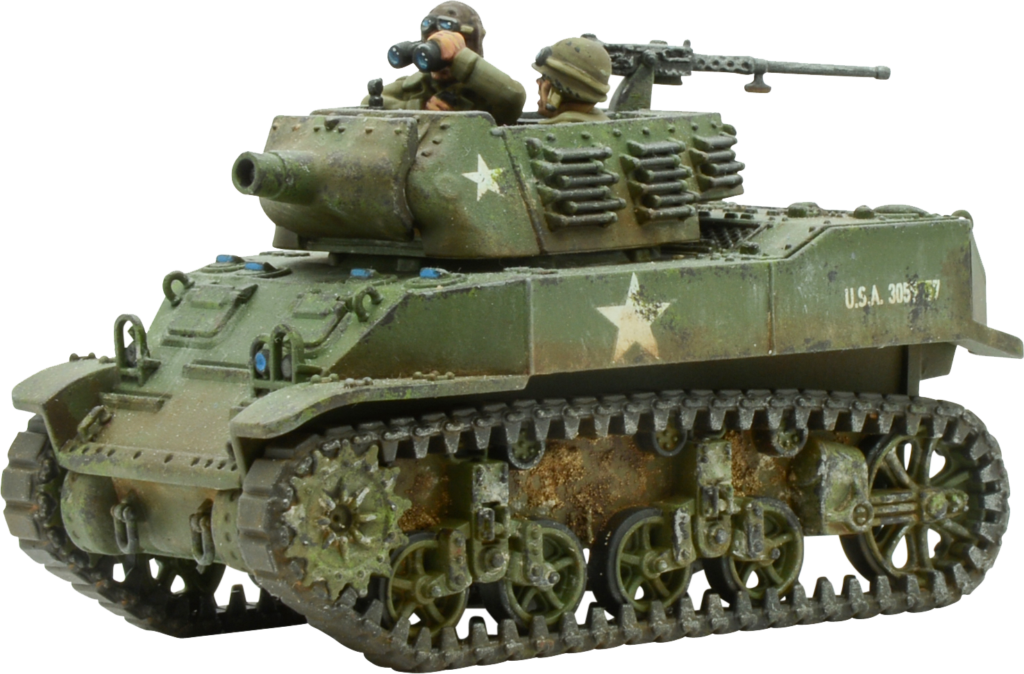
Named after the American Civil War general, Winfield Scott, the M8 saw action in North African, Tunisian, North West Europe, Italian and Pacific campaigns in World War II as well as during the Indochina and Vietnam wars. Fielded almost exclusively by US Army or USMC forces, a total of 1,778 M8 Scott HMCs were produced. The M8 was increasingly replaced in the self-propelled artillery role by the M7 Priest and the M4 Sherman with 105mm howitzer – the M8s open-topped turret would continue to be utilised on the support version of the LVT(A)-4 amphibious craft.
The Commandos & HMC Scott are now available on pre-order, due for release this weekend. The following kits have already hit tabletops and are available now on the Warlord Webstore:
British Army 5.5 inch Medium Howitzer (Late War)
Providing counter-battery fire primarily the 5.5 inch field guns brings the British Army potent indirect fire. The BL 5.5 inch field howitzer gave excellent service to British and Commonwealth forces throughout World War II. The guns continued to see action after the war with service during the Korean War, Indo-Pakistani wars and South African Border Wars.
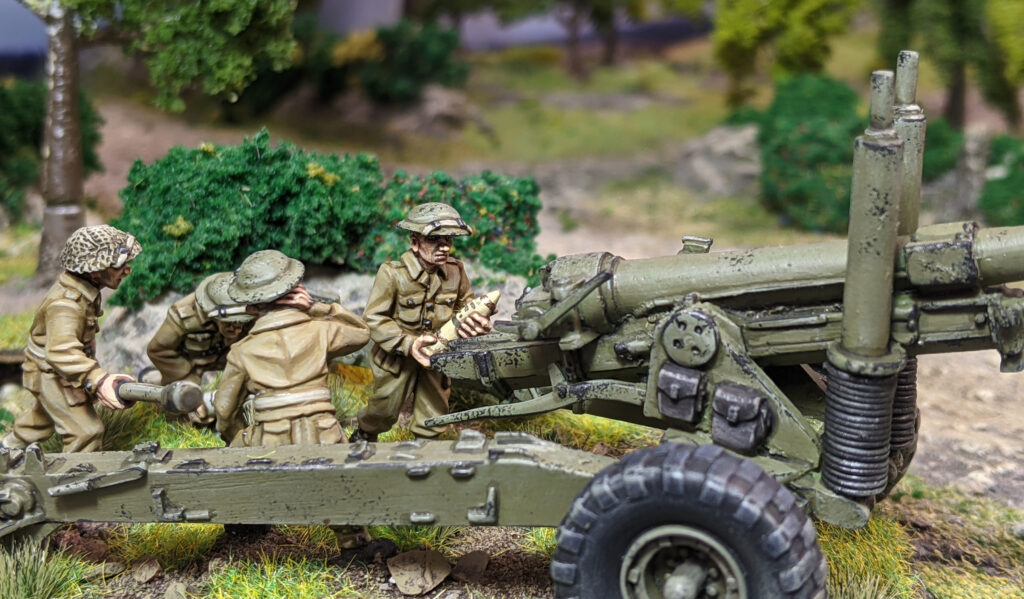
M6 Fargo 37mm GMC
The M6 Gun Motor Carriage, more commonly known as the M6 Fargo, was America’s first tank destroyer of World War II. Mounting a 37mm anti-tank gun on the Dodge Weapons Carrier the Fargo provided mobile anti-tank capability to US infantry formations. The M6 Fargo initially saw action in the Tunisian campaign before being used extensively by US forces in the Pacific theatre. Over 5,000 vehicles were built.
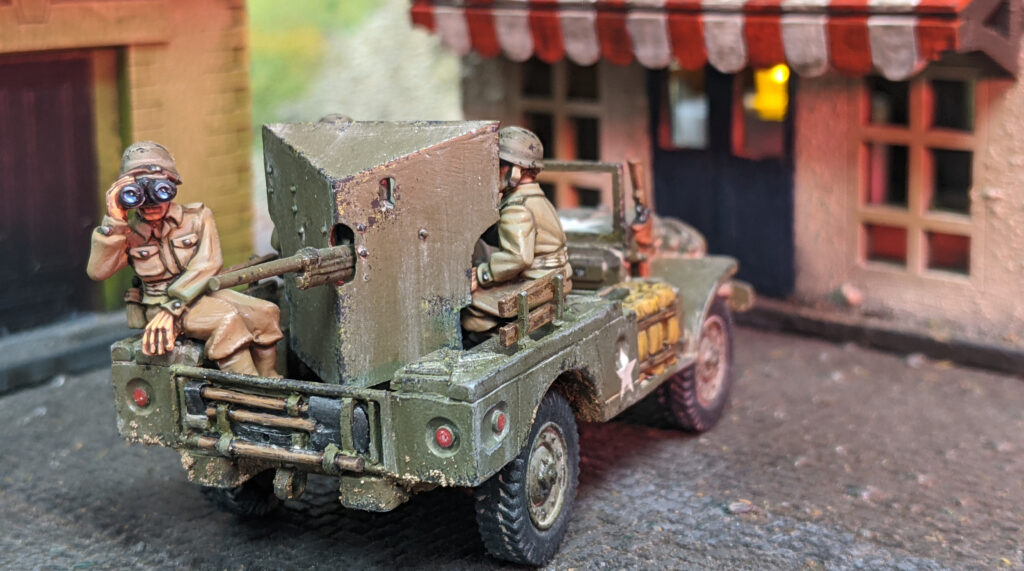
Panzer Lehr Squad
The Panzer Lehr Division (armoured training division) was built in 1943 from the veterans of the North Africa, Sicily and Italy campaigns. These highly experienced troops formed the core of this training and demonstration unit and as such was considered an elite formation from its inception.
In 1944, the Panzer Lehr Division took part in the invasion of Hungary before moving to France to await the Allied invasion of Europe. Unlike other panzer divisions of the German wehrmacht, all the panzergrenadiers of the Panzer Lehr were mounted on half-tracks, making it the only fully mechanised unit in the German army. In addition, they were the first to fight alongside the new Tiger II tanks. They also wore a distinctive double-breasted assault gun-style jacket instead of the normal Heer field blouse.

